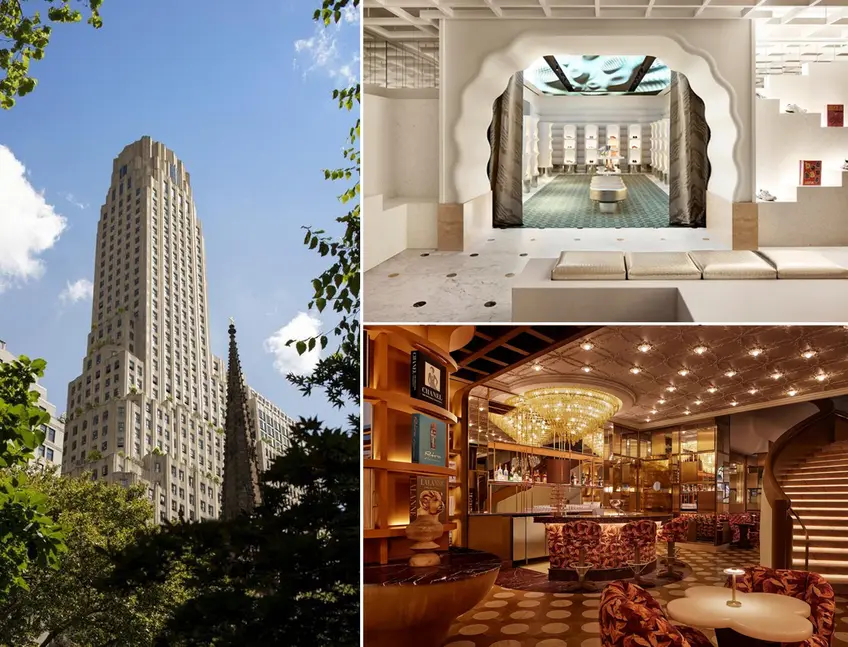 (l-r) One Wall Street (One Wall Street Sales LLC); Printemps New York (Gieves Anderson for Printemps New York)
(l-r) One Wall Street (One Wall Street Sales LLC); Printemps New York (Gieves Anderson for Printemps New York)
Just as the internet revolutionized shopping in the modern era, the Industrial Revolution transformed shopping just as dramatically, if not more so. By fueling rapid invention, steam power, and an expanded labor force, the Industrial Revolution laid the foundation for the department store. As the middle class expanded, shopping evolved beyond small specialty shops, giving rise to stores that offered a variety of goods under one roof at multiple price points.
In Europe, London’s Harding, Howell & Co.’s Grand Fashionable Magazine, which opened in 1796, was divided into four departments catering exclusively to fashionable women, offering them a refined and secure shopping experience. In 1852, Aristide and Marguerite Boucicaut launched Le Bon Marché Rive Gauche in Paris, designed by Louis-Charles Boileau and Gustave Eiffel. More than a store, it was a cultural landmark, blending fashion, accessories, furniture, and art to create an immersive shopping experience that elevated retail.
In this article:
By the early 20th century, American department stores took this concept further, using elaborate displays, demonstrations, and entertainment to shape not just commerce but a way of life. By the mid-1960s, Macy’s, Hudson’s, and Marshall Field’s were the largest, with Hudson’s standing out as a 25-story retail giant employing 12,000 people and drawing 100,000 daily shoppers. Marshall Field himself initially dismissed department stores as low-class, but under the vision of Harry Selfridge (founder of the eponymous London department store), his Chicago store became an icon of quality and conservative refinement. Meanwhile, Macy’s cemented its place in New York retail, doubling in size in 1924, launching its first holiday parade, and ultimately becoming the nation’s largest department store.
On Friday, March 21, France’s 160-year-old Printemps will open its first American outpost in the iconic office-to-residential conversion One Wall Street. Jean-Marc Bellaiche, CEO of Printemps Groupe, told Fast Company that Printemps spent a lot of time thinking about the new dynamics in the Financial District. He points out that the area was once dominated by bankers, but there are many other businesses in the area now, including media, fashion, and technology. "The Spotify headquarters are nearby," he says.
He also finds it appealing that there are many new apartment complexes in the area, and families are moving in. "It makes the area feel much more like a real neighborhood, one that we are now a part of."
These include the condos on top of Printemps at One Wall Street. Current availabilities range from an alcove studio for $895K to a three-bedroom with private terrace for $5.995 million. Not only do residents enjoy access to an upper-level amenities suite, but they are also set to enjoy special privileges at Printemps New York. These include priority access to events and product launches, invitations to private shopping experiences, expert staff that includes personal shoppers, and crossover privileges at Printemps Paris.
He also finds it appealing that there are many new apartment complexes in the area, and families are moving in. "It makes the area feel much more like a real neighborhood, one that we are now a part of."
These include the condos on top of Printemps at One Wall Street. Current availabilities range from an alcove studio for $895K to a three-bedroom with private terrace for $5.995 million. Not only do residents enjoy access to an upper-level amenities suite, but they are also set to enjoy special privileges at Printemps New York. These include priority access to events and product launches, invitations to private shopping experiences, expert staff that includes personal shoppers, and crossover privileges at Printemps Paris.
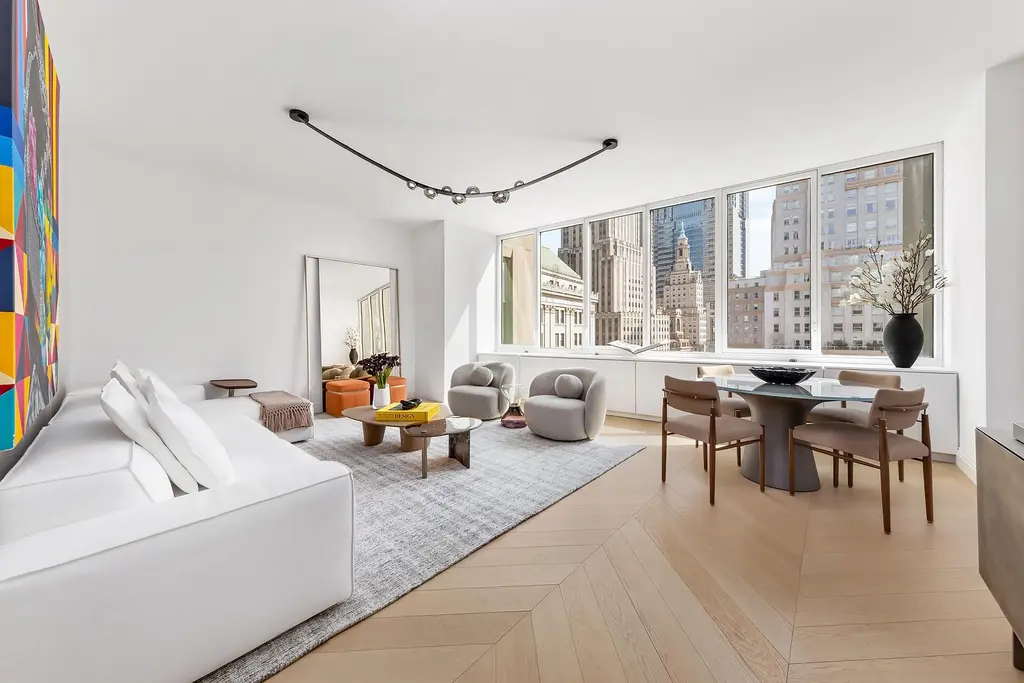
One Wall Street, #2609 (One Wall Street Sales LLC)
Printemps New York's 55,000-square-foot, two-story space was designed by Laura Gonzalez, a French interior designer known for her freewheeling combinations of motifs, materials, styles, and furnishings. Gonzalez’s stunning classicism infused with romanticism can be seen in numerous Cartier boutiques, Pierre Hermé Champs-Elysées, Christian Louboutin's Barcelona flagship, as well as luxurious residential buildings, restaurants and hotels.
One Wall Street's landmarked Red Room, with its mural by Hildreth Meière, has been transformed into a "shoe salon." The store's offerings will also include clothing, accessories, cosmetics, home decor, and five food and beverage options from culinary director Gregory Gourdet, a James Beard Award winner and Top Chef finalist. Shoppers will also be able to take French lessons, meditate, get massages, and much more.
Laura Lendrum, the CEO of Printemps America, told New York Magazine, “We think of it as a French apartment.”
Laura Lendrum, the CEO of Printemps America, told New York Magazine, “We think of it as a French apartment.”
As Printemps appears poised to revitalize New York's department store scene, not to mention the Financial District's retail scene, we've highlighted some of the city's most iconic department stores and buildings that have shaped its retail landscape. We also look at nearby listings with ample closet space and dressing rooms.
A few iconic NYC Department Stores
Bergdorf Goodman
754 Fifth Avenue
754 Fifth Avenue
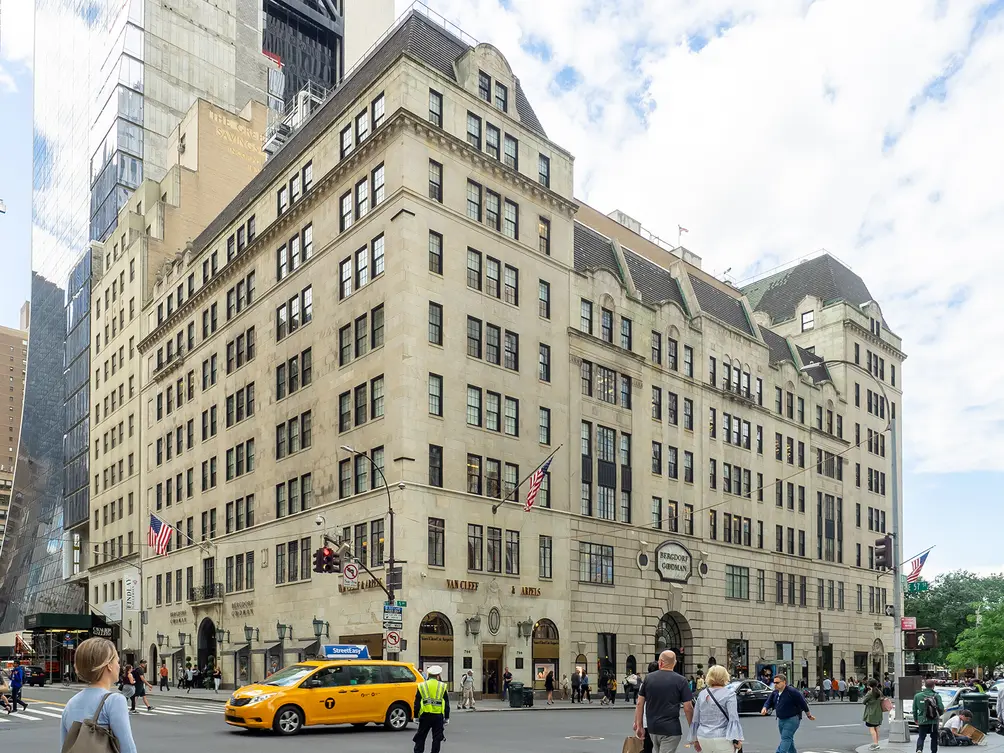 Bergdorf Goodman (Ajay Suresh from New York, NY, USA - Original Store -Bergdorf Goodman, CC BY 2.0, https://commons.wikimedia.org/w/index.php?curid=79704876)
Bergdorf Goodman (Ajay Suresh from New York, NY, USA - Original Store -Bergdorf Goodman, CC BY 2.0, https://commons.wikimedia.org/w/index.php?curid=79704876)
The Bergdorf Goodman Building, designed by Albert Buchman and Ely Jacques Kahn, was constructed between 1927 and 1928 as seven separate storefronts. Originally housing various tenants, including Dobbs & Co. and Parke-Bernet, it became home to Bergdorf Goodman's women's store and a Van Cleef & Arpels boutique by 1940.
Built on the former site of the Cornelius Vanderbilt II House, the structure was commissioned by real estate developer Frederick Brown. Bergdorf Goodman initially leased only the northernmost storefront but gradually acquired the entire building, completing its expansion in 1947. Major renovations occurred in the late 1950s, 1960s, 1980s, and throughout the 2000s and 2010s. The women's store fully occupied the building in 1990 after a dedicated men's store opened across Fifth Avenue.
Designed to echo the Vanderbilt mansion, the building features white South Dover marble with multicolored veins and a green mansard roof. Its northernmost and southernmost sections rise nine stories, while the central portion was originally seven. Once separate storefronts, the spaces are now interconnected by ramps, and the extensively modified French-style interiors house various shops and salons. Long considered an unofficial landmark for fashion lovers, it was designated an individual New York City Landmark in December 2016.
Aman New York Residences, #18B
$27,000,000
Midtown West | Condominium | 2 Bedrooms, Unknown Baths | 3,416 ft2
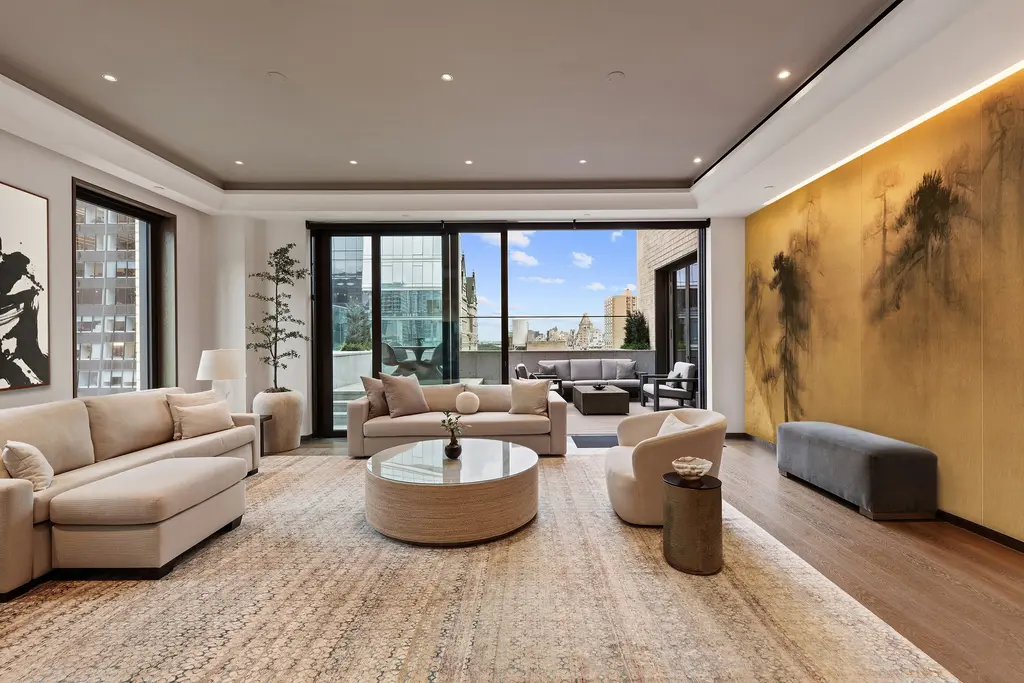
Aman New York Residences, #18B (Aman Property DE)
Bloomingdale's
1000 Third Avenue
1000 Third Avenue
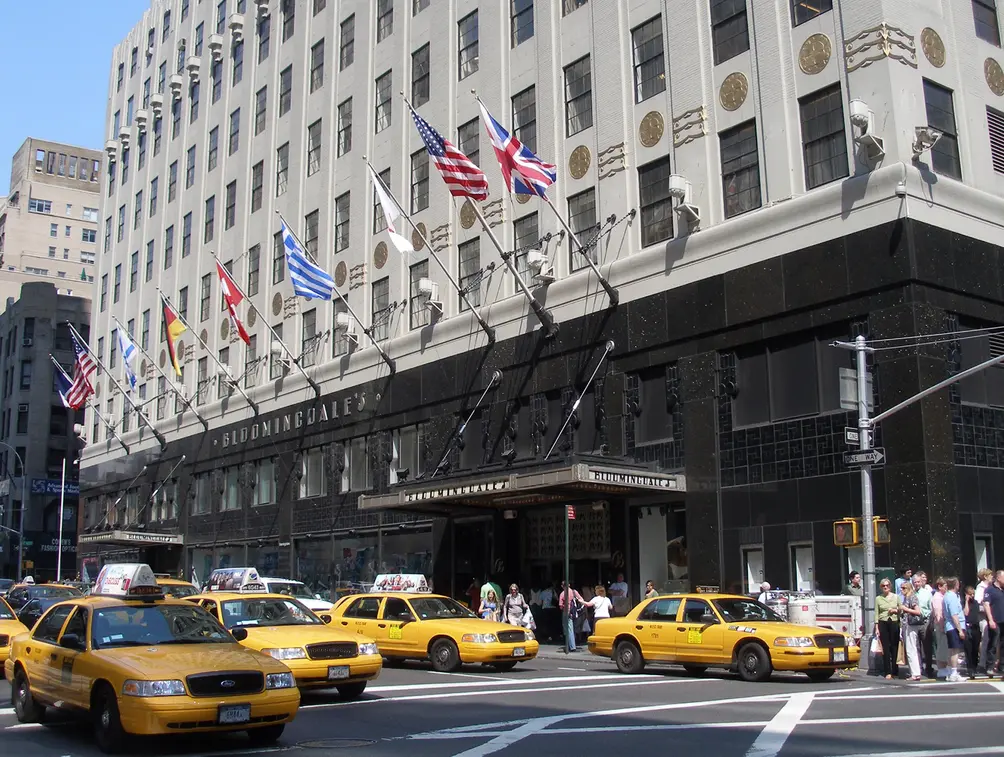 Bloomingdale's (Coolcaesar at the English Wikipedia, CC BY-SA 3.0, https://commons.wikimedia.org/w/index.php?curid=15864132)
Bloomingdale's (Coolcaesar at the English Wikipedia, CC BY-SA 3.0, https://commons.wikimedia.org/w/index.php?curid=15864132)
Bloomingdale's was founded in 1861 on New York City's Lower East Side by Benjamin Bloomingdale and his son Lyman, originally as Bloomingdale's Hoopskirts, specializing in hoop skirts and European fashion. Lyman and his brother Joseph opened a second store, Bloomingdale's Great East Side Bazaar, in 1872 at 965 Third Avenue in Midtown Manhattan. The Bazaar expanded into three adjacent buildings before relocating to its current flagship location at 59th Street and Third Avenue.
200 East 59th Street, #PH32
$17,990,000
Midtown East | Condominium | 2 Bedrooms, 3.5 Baths | 3,924 ft2
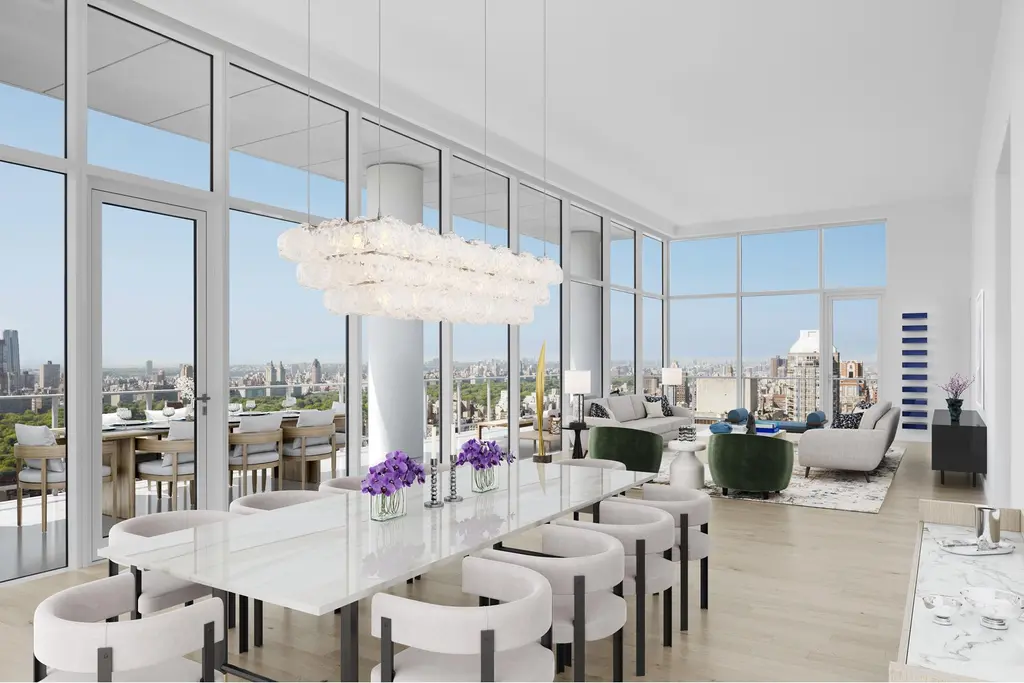
200 East 59th Street, #PH32 (Douglas Elliman Real Estate)
Saks Fifth Avenue
611 Fifth Avenue
611 Fifth Avenue
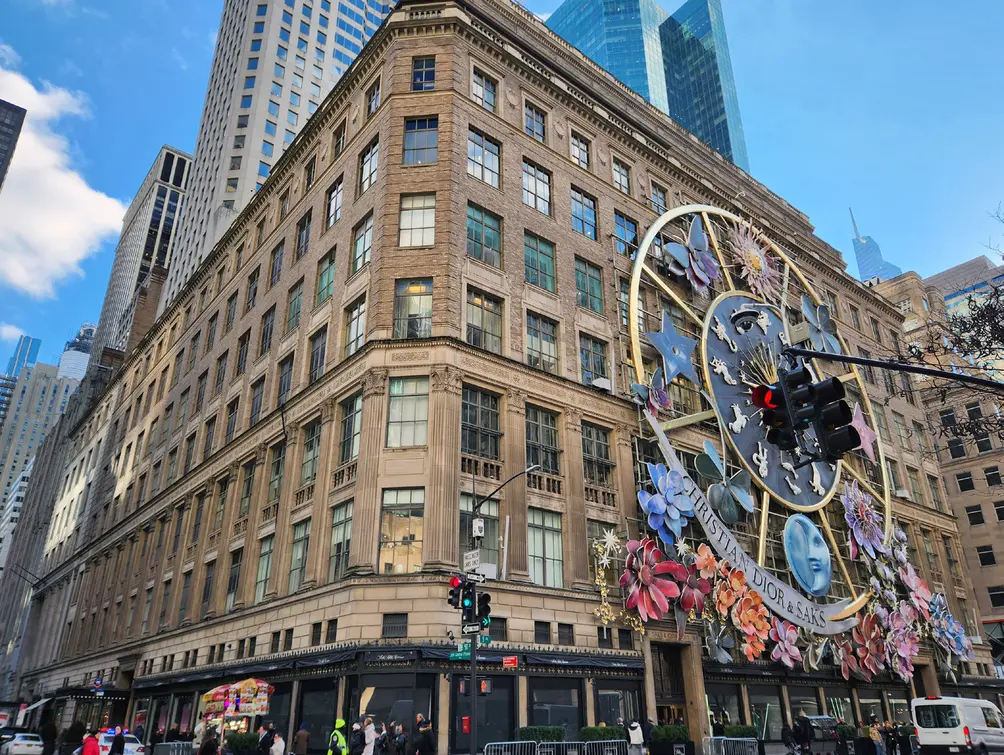 Saks Fifth Avenue
Saks Fifth Avenue
There are Saks Fifth Avenue outposts all over the country, but the Fifth Avenue location has served as its flagship since its completion in 1924. Designed by Starrett & van Vleck in the classical style, the 10-story building features an Indiana limestone facade with chamfered corners. It was the first department store on Fifth Avenue to incorporate zoning-required setbacks.
Founded as a joint venture between Horace Saks and Bernard Gimbel, the store expanded into a nationwide chain. In 1984, the original building was designated a New York City landmark. A 36-story tower at 623 Fifth Avenue, designed by Lee Harris Pomeroy Associates and Abramovitz Kingsland Schiff, was added in 1990, partially mirroring the original structure.
Founded as a joint venture between Horace Saks and Bernard Gimbel, the store expanded into a nationwide chain. In 1984, the original building was designated a New York City landmark. A 36-story tower at 623 Fifth Avenue, designed by Lee Harris Pomeroy Associates and Abramovitz Kingsland Schiff, was added in 1990, partially mirroring the original structure.
Would you like to tour any of these properties?
Just complete the info below.
Or call us at (212) 755-5544
The flagship store has undergone numerous renovations over the years. Conceptual renderings for a casino on the department store's upper levels were released in early 2023; and in May 2024, permits were filed to convert the office tower at 626 Fifth Avenue, which connects to the Saks Fifth Avenue flagship, to residential use.
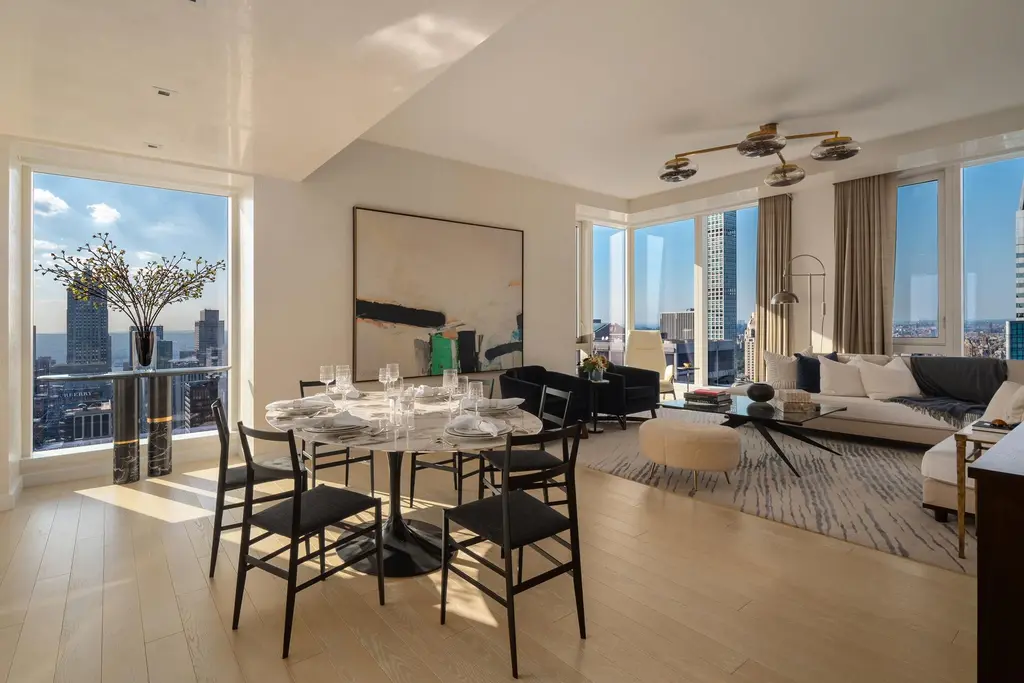
The Centrale, #64 (Douglas Elliman Real Estate)
Macy's
151 West 34th Street
151 West 34th Street
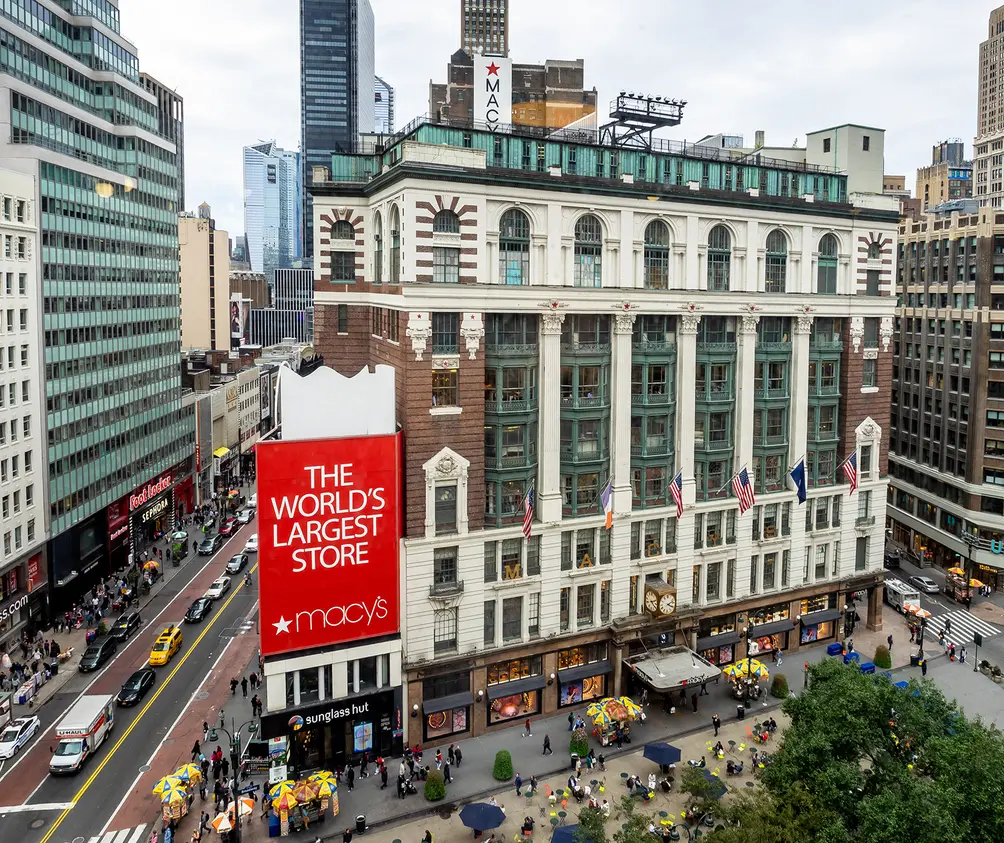 Macy's (Ajay Suresh from New York, NY, USA - HeraldSquare-Oct14-1, CC BY 2.0, https://commons.wikimedia.org/w/index.php?curid=74460073)
Macy's (Ajay Suresh from New York, NY, USA - HeraldSquare-Oct14-1, CC BY 2.0, https://commons.wikimedia.org/w/index.php?curid=74460073)
Macy's, founded in 1858 by Rowland Hussey Macy, is the largest U.S. department store chain by retail sales as of 2023. The company operates 508 stores nationwide, with its flagship at Herald Square in Manhattan—one of the world's largest department stores, spanning 1.1 million square feet.
Macy's has hosted the Thanksgiving Day Parade since 1924 and sponsored New York City’s 4th of July Fireworks since 1976. As of January 2023, the company employed 94,000 people and reported $25.3 billion in revenue. The Herald Square property alone is valued at $3 billion.
Macy's has hosted the Thanksgiving Day Parade since 1924 and sponsored New York City’s 4th of July Fireworks since 1976. As of January 2023, the company employed 94,000 people and reported $25.3 billion in revenue. The Herald Square property alone is valued at $3 billion.
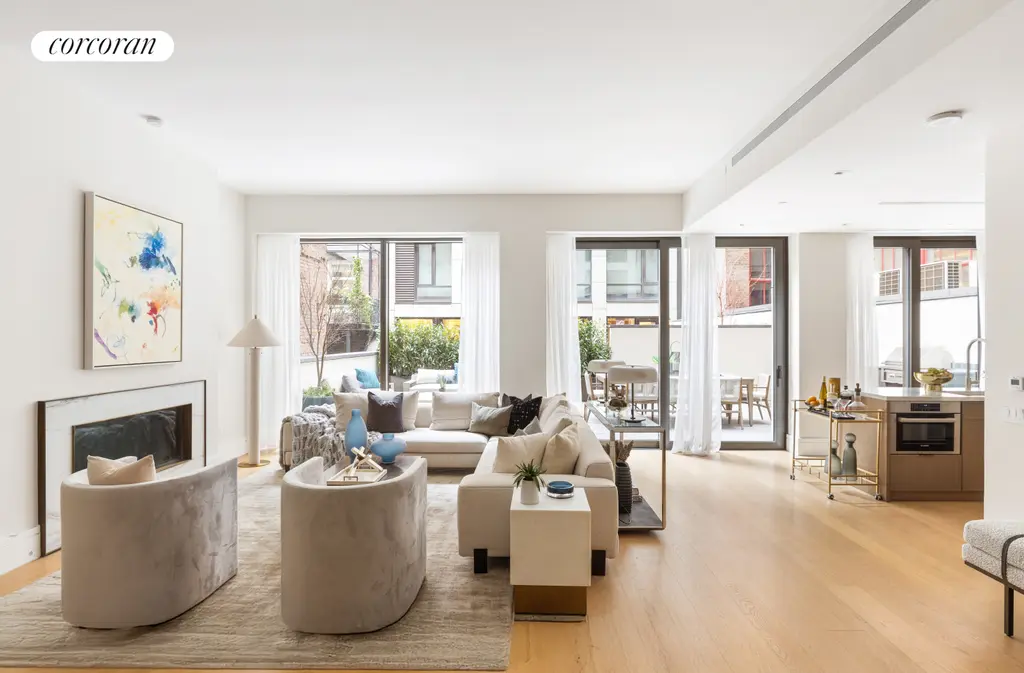
Flatiron House, #TH1 (Corcoran Sunshine Marketing Group)
Nordstrom
225 West 57th Street
225 West 57th Street
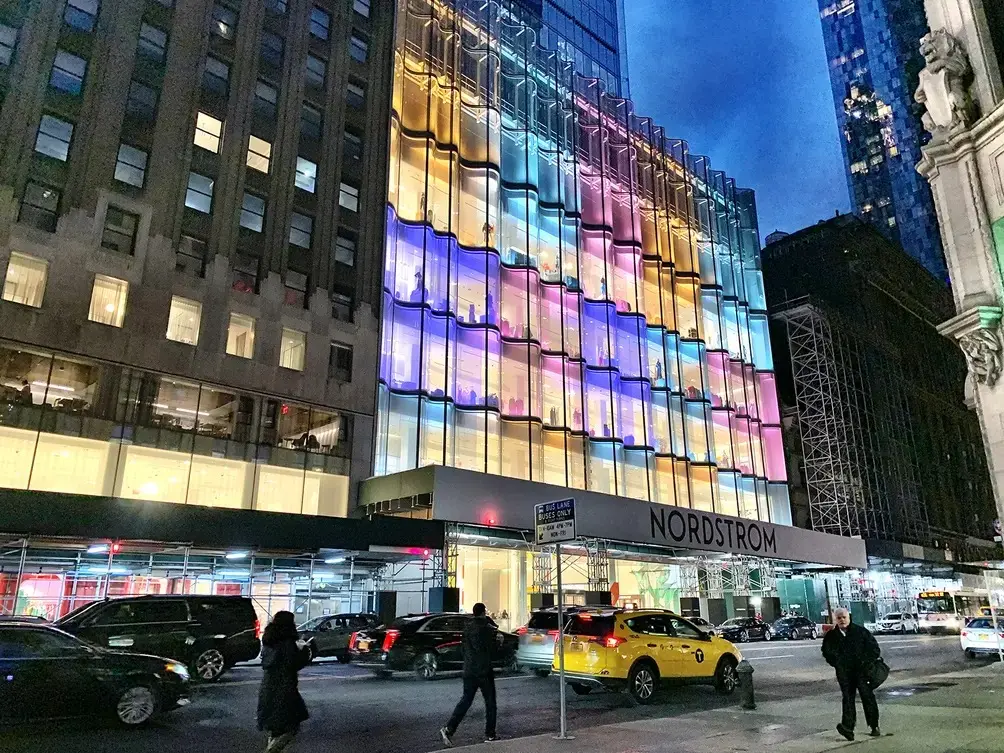 Nordstrom (CityRealty)
Nordstrom (CityRealty)
John W. Nordstrom was born on February 15, 1871, in Alvik, Sweden, and immigrated to the U.S. in 1887 at age 16. After working in Michigan and saving enough to buy a farm in Washington, he joined the Klondike Gold Rush in 1897. He eventually sold a disputed gold claim for $13,000, returned to Seattle and partnered with Carl F. Wallin to open Wallin & Nordstrom, a Seattle shoe store in 1901. Mr. Nordstrom's three sons—Everett, Elmer, and Lloyd—later joined the business and ran the company for nearly 40 years.
By 1958, Nordstrom had expanded to eight stores across two states, still focusing solely on shoes. In 1963, it acquired Best’s Apparel in Seattle, marking its entry into clothing and prompting a name change to Nordstrom Best.
By 1958, Nordstrom had expanded to eight stores across two states, still focusing solely on shoes. In 1963, it acquired Best’s Apparel in Seattle, marking its entry into clothing and prompting a name change to Nordstrom Best.
After launching its men’s store in April 2018 and two Nordstrom Local outposts, the Seattle-based retailer unveiled its first women’s flagship in New York City in October 2019. Spanning seven floors and 320,000 square feet, the store anchors Central Park Tower, the tallest residential building in the world.
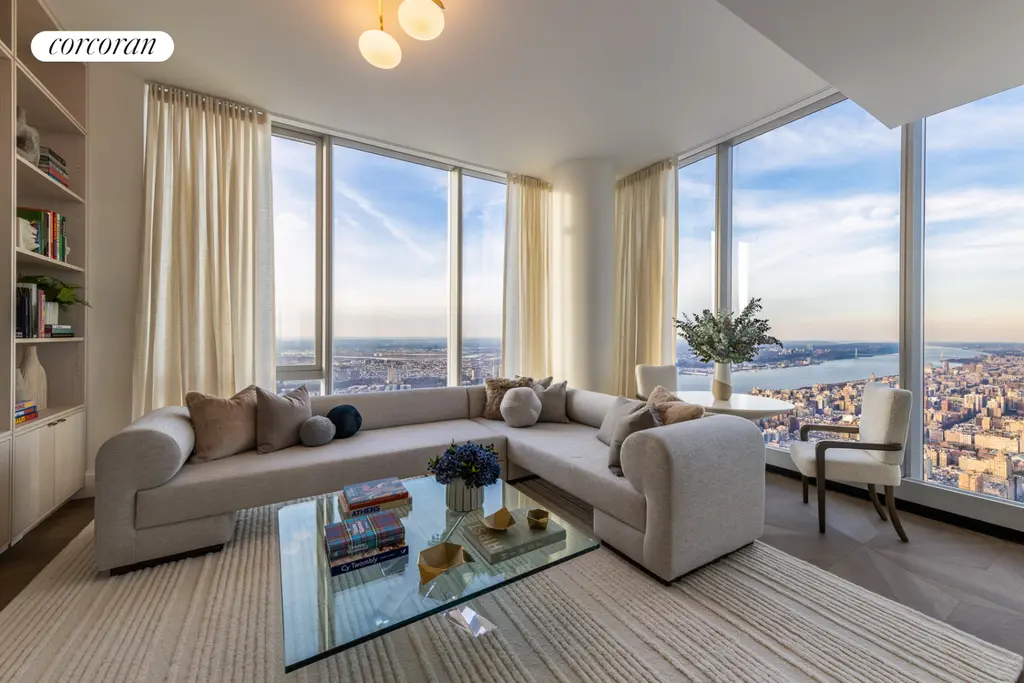
Central Park Tower, #110 (Corcoran Sunshine Marketing Group)
Lord & Taylor (closed)
424-434 Fifth Avenue
424-434 Fifth Avenue
Samuel Lord founded a dry goods business in New York City in 1824, opening the first Lord & Taylor store in 1826 on Catherine Street. His wife's cousin, George Washington Taylor, joined in 1834, leading to the store’s renaming. The business expanded, moving to Grand and Chrystie Streets in 1854 and opening a second location on Broadway in 1859.
In 1870, Lord & Taylor relocated to a cast-iron building at Broadway and 20th Street, featuring one of the first steam-powered elevators. Facing financial struggles after the Panic of 1873, the company rebounded and expanded to Fifth Avenue in 1903 and 1906.
In 1870, Lord & Taylor relocated to a cast-iron building at Broadway and 20th Street, featuring one of the first steam-powered elevators. Facing financial struggles after the Panic of 1873, the company rebounded and expanded to Fifth Avenue in 1903 and 1906.
The iconic Lord & Taylor Building, designed by Starrett & van Vleck, opened at Fifth Avenue and 38th Street on February 24, 1914, with modern innovations like electric delivery garages and conveyor systems. The Broadway store was sold soon after.
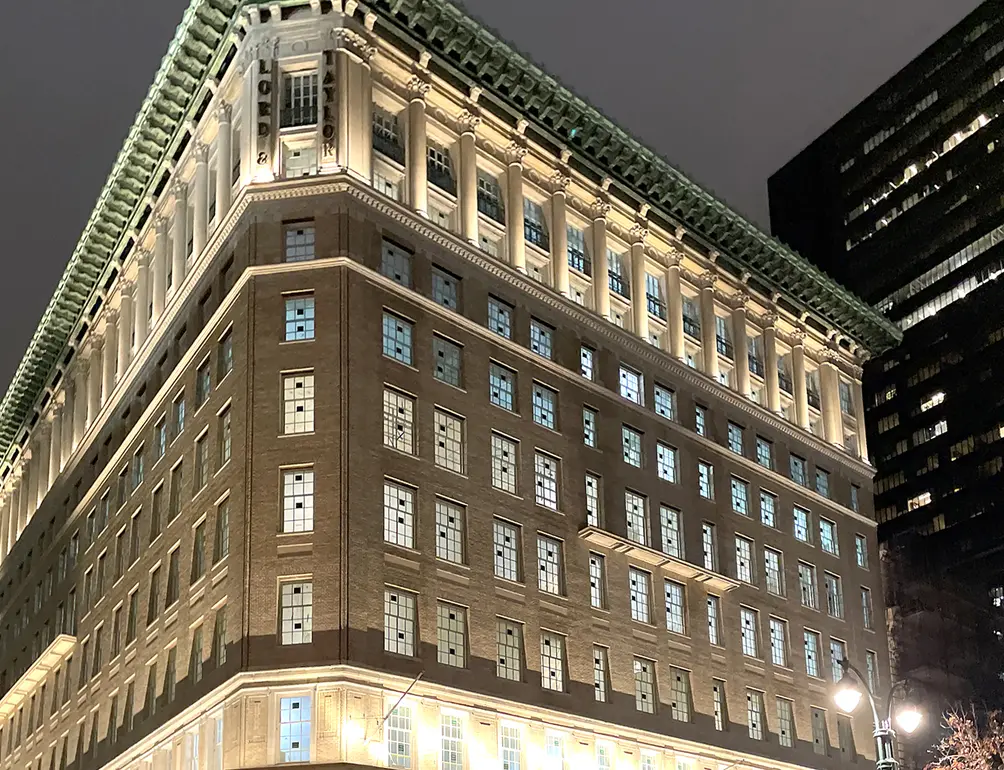 Lord & Taylor Building (CityRealty)
Lord & Taylor Building (CityRealty)
The Fifth Avenue flagship was designated a New York City Landmark in 2007, but the department store closed in 2019. Parent company Hudson Bay sold the building to WeWork, which announced plans to turn it into its corporate headquarters, but Amazon bought the building for $978 million in March 2020. The work space inside has been dubbed "Hank" after a unit of textile measurement, and is home to about one fifth of Amazon's New York employees (h/t 6sqft).
Later this year, the building will welcome Shaver Hall, a 35,000-square-foot food hall on the ground floor. Named after former Lord & Taylor president Dorothy Shaver, it will feature more than 10 food stalls, two full-service bars, a "uniquely crafted bodega," and live music.
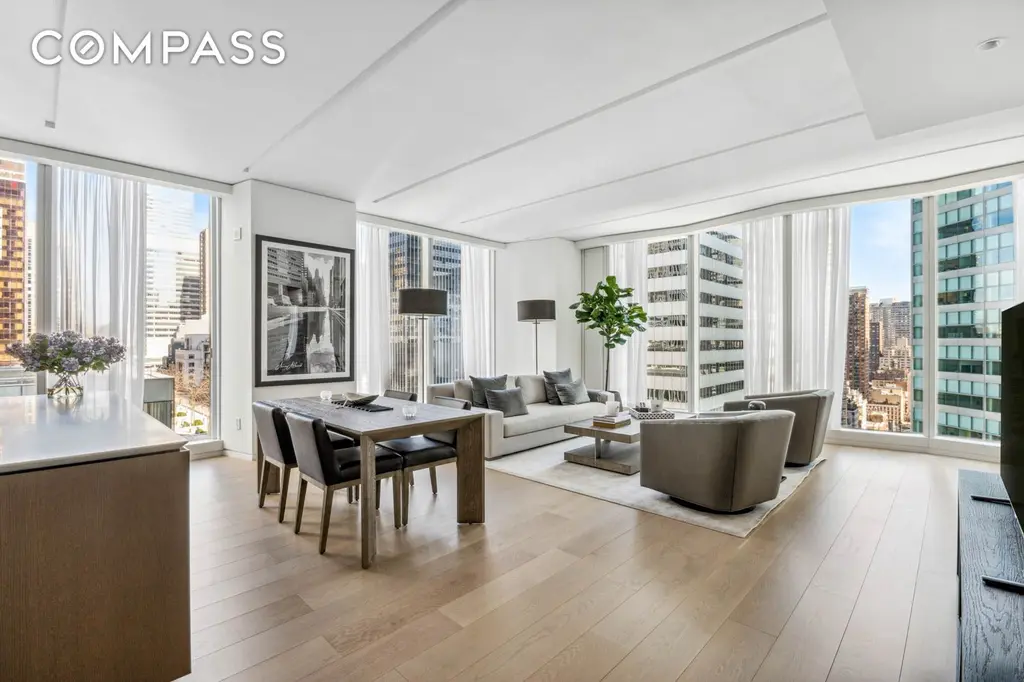
Selene, #19A (Compass)
Henri Bendel (closed)
712 Fifth Avenue
712 Fifth Avenue
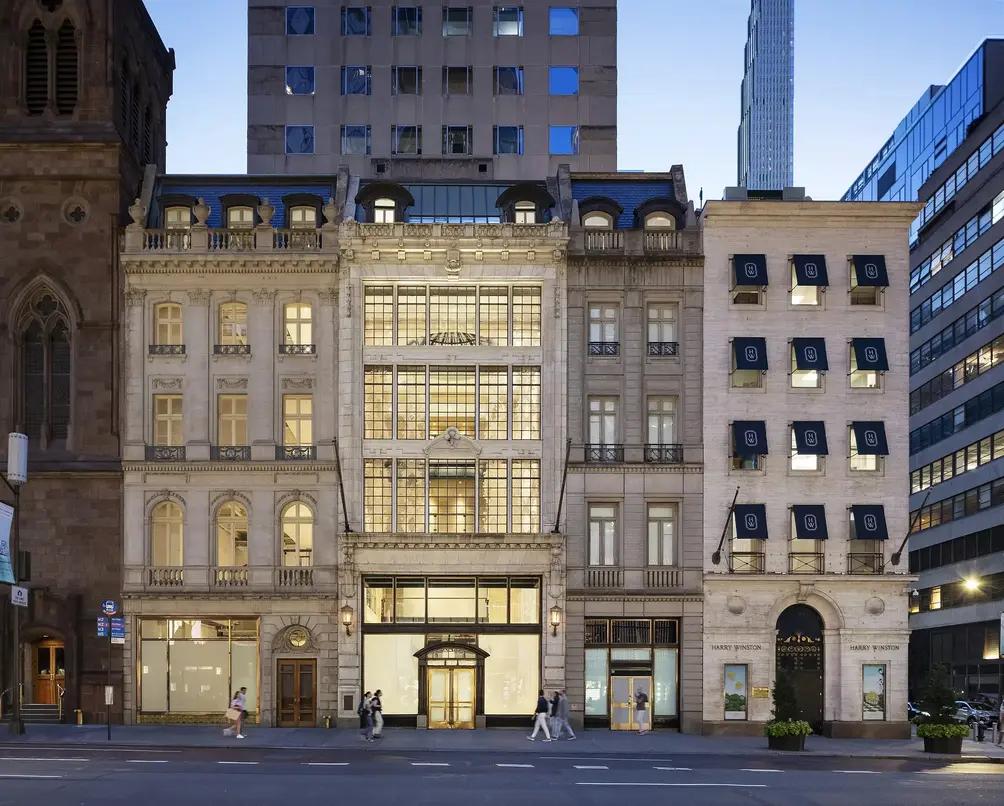 Former Henri Bendel flagship (Credit: Kohn Pedersen Fox)
Former Henri Bendel flagship (Credit: Kohn Pedersen Fox)
Henri Bendel, Inc., founded in 1895, was a New York City-based women's department store that later specialized in handbags, jewelry, fashion accessories, home fragrances, chocolate, and gifts. Originally located at 10 West 57th Street, it moved to 712 Fifth Avenue in 1985 after being purchased by Limited.
From 1985 until its closure in 2018, the flagship store occupied two adjacent buildings—Rizzoli and Coty—along with a new five-story structure. During renovations, 276 historic glass panes by René Lalique, commissioned in 1912, were restored and featured in the store’s windows. The building, granted landmark status in 1985, was praised by The New York Times’ Paul Goldberger: "For this mix of new architecture and old, skillfully integrated, holds more promise for the revival of Fifth Avenue than anything that has happened to that troubled boulevard in the last decade."
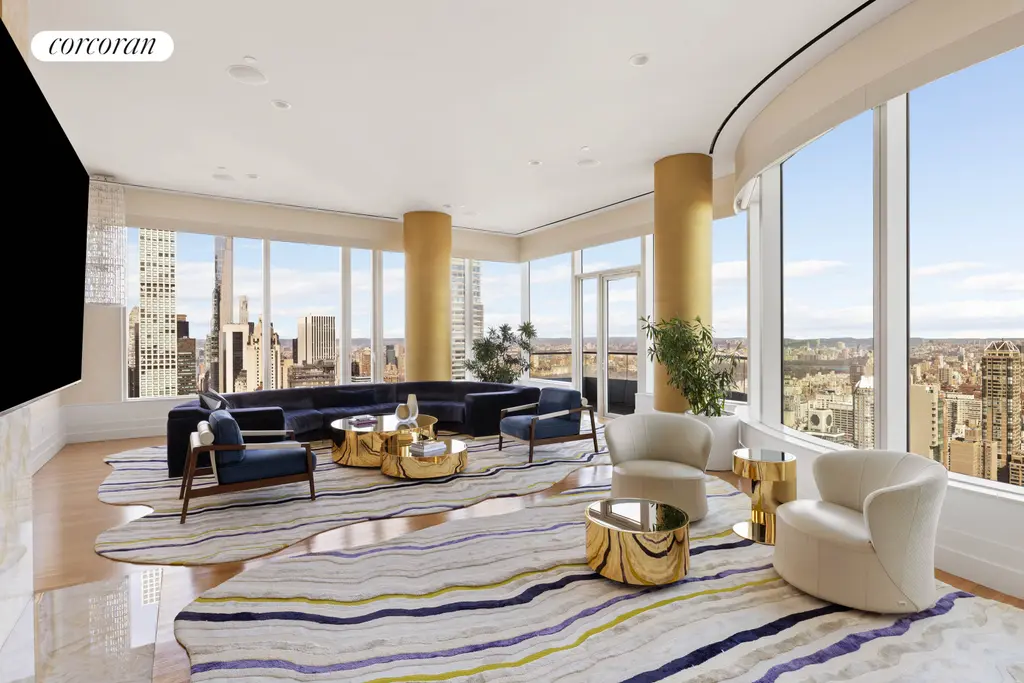
252 East 57th Street, #62A (Corcoran Group)
Would you like to tour any of these properties?
Just complete the info below.
Or call us at (212) 755-5544
Would you like to tour any of these properties?

Contributing Writer
Michelle Sinclair Colman
Michelle writes children's books and also writes articles about architecture, design and real estate. Those two passions came together in Michelle's first children's book, "Urban Babies Wear Black." Michelle has a Master's degree in Sociology from the University of Minnesota and a Master's degree in the Cities Program from the London School of Economics.

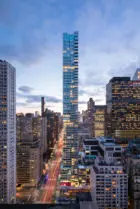
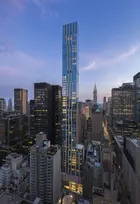
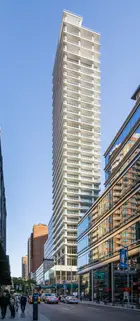
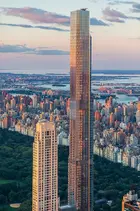
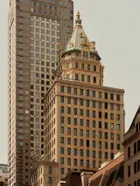
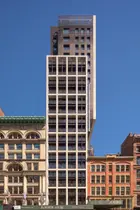
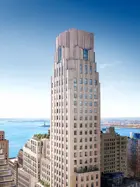
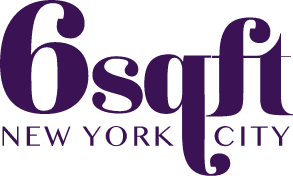 6sqft delivers the latest on real estate, architecture, and design, straight from New York City.
6sqft delivers the latest on real estate, architecture, and design, straight from New York City.
